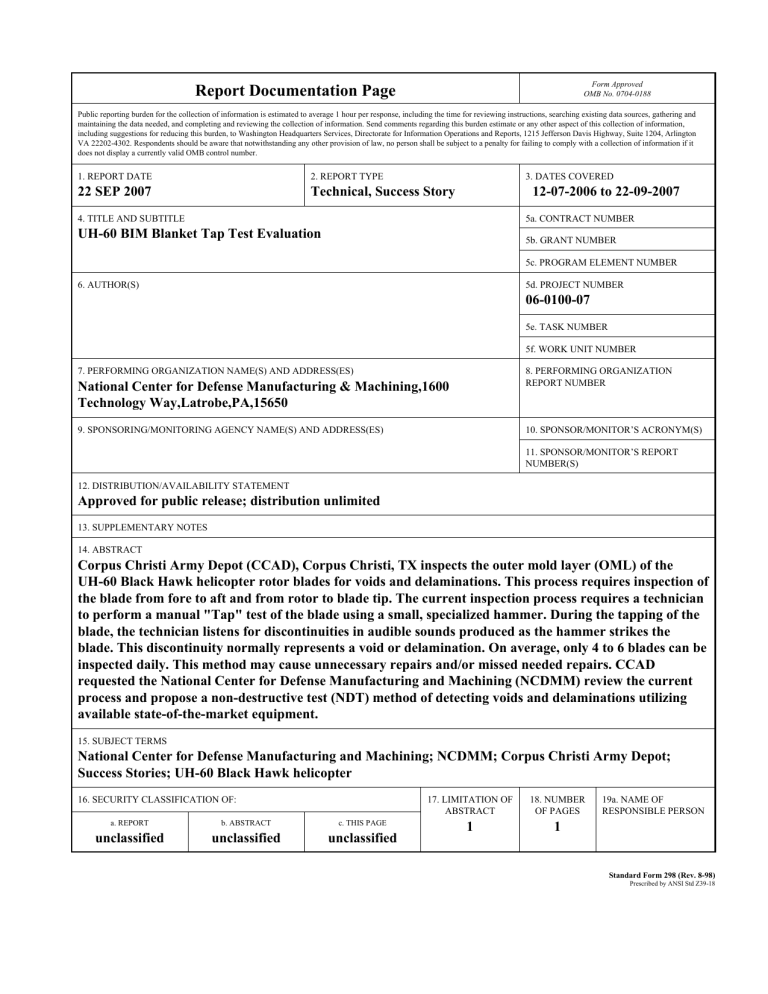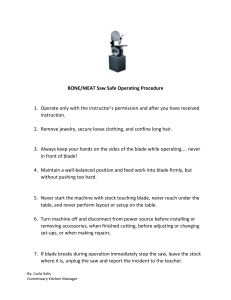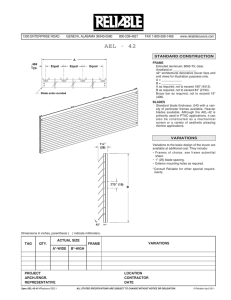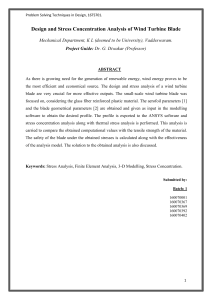
Form Approved OMB No. 0704-0188 Report Documentation Page Public reporting burden for the collection of information is estimated to average 1 hour per response, including the time for reviewing instructions, searching existing data sources, gathering and maintaining the data needed, and completing and reviewing the collection of information. Send comments regarding this burden estimate or any other aspect of this collection of information, including suggestions for reducing this burden, to Washington Headquarters Services, Directorate for Information Operations and Reports, 1215 Jefferson Davis Highway, Suite 1204, Arlington VA 22202-4302. Respondents should be aware that notwithstanding any other provision of law, no person shall be subject to a penalty for failing to comply with a collection of information if it does not display a currently valid OMB control number. 1. REPORT DATE 2. REPORT TYPE 3. DATES COVERED 22 SEP 2007 Technical, Success Story 12-07-2006 to 22-09-2007 4. TITLE AND SUBTITLE 5a. CONTRACT NUMBER UH-60 BIM Blanket Tap Test Evaluation 5b. GRANT NUMBER 5c. PROGRAM ELEMENT NUMBER 6. AUTHOR(S) 5d. PROJECT NUMBER 06-0100-07 5e. TASK NUMBER 5f. WORK UNIT NUMBER 7. PERFORMING ORGANIZATION NAME(S) AND ADDRESS(ES) 8. PERFORMING ORGANIZATION REPORT NUMBER National Center for Defense Manufacturing & Machining,1600 Technology Way,Latrobe,PA,15650 9. SPONSORING/MONITORING AGENCY NAME(S) AND ADDRESS(ES) 10. SPONSOR/MONITOR’S ACRONYM(S) 11. SPONSOR/MONITOR’S REPORT NUMBER(S) 12. DISTRIBUTION/AVAILABILITY STATEMENT Approved for public release; distribution unlimited 13. SUPPLEMENTARY NOTES 14. ABSTRACT Corpus Christi Army Depot (CCAD), Corpus Christi, TX inspects the outer mold layer (OML) of the UH-60 Black Hawk helicopter rotor blades for voids and delaminations. This process requires inspection of the blade from fore to aft and from rotor to blade tip. The current inspection process requires a technician to perform a manual "Tap" test of the blade using a small, specialized hammer. During the tapping of the blade, the technician listens for discontinuities in audible sounds produced as the hammer strikes the blade. This discontinuity normally represents a void or delamination. On average, only 4 to 6 blades can be inspected daily. This method may cause unnecessary repairs and/or missed needed repairs. CCAD requested the National Center for Defense Manufacturing and Machining (NCDMM) review the current process and propose a non-destructive test (NDT) method of detecting voids and delaminations utilizing available state-of-the-market equipment. 15. SUBJECT TERMS National Center for Defense Manufacturing and Machining; NCDMM; Corpus Christi Army Depot; Success Stories; UH-60 Black Hawk helicopter 16. SECURITY CLASSIFICATION OF: a. REPORT b. ABSTRACT c. THIS PAGE unclassified unclassified unclassified 17. LIMITATION OF ABSTRACT 18. NUMBER OF PAGES 1 1 19a. NAME OF RESPONSIBLE PERSON Standard Form 298 (Rev. 8-98) Prescribed by ANSI Std Z39-18 UH-60 BIM Blanket Tap Test Evaluation NCDMM Project No. 06-0100-07 PROBLEM / OBJECTIVE Corpus Christi Army Depot (CCAD), Corpus Christi, TX inspects the outer mold layer (OML) of the UH-60 Black Hawk helicopter rotor blades for voids and delaminations. This process requires inspection of the blade from fore to aft and from rotor to blade tip. The current inspection process requires a technician to perform a manual “Tap” test of the blade using a small, specialized hammer (Figure #1). During the tapping of the blade, the technician listens for discontinuities in audible sounds produced as the hammer strikes the blade. This discontinuity normally represents a void or delamination (Figure #2). On average, only 4 to 6 blades can be inspected daily. This method may cause unnecessary repairs and/or missed needed repairs. CCAD requested the National Center for Defense Manufacturing and Machining (NCDMM) review the current process and propose a non-destructive test (NDT) method of detecting voids and delaminations utilizing available state-of-the-market equipment. change in load on the work piece. This change in load used to create the deformation on the work piece can be created by thermal or pressure stress excitation. In this evaluation, both thermal and pressure systems were reviewed. Both systems provided clear images of structural features and surface/subsurface anomalies. In addition, quantitative data such as defect size, area, and depth can be displayed (Figure #3). The post analysis software package accompanying the system is capable of stitching the individual test pictures together to form a picture of the complete blade surface. Utilizing this advanced technology, the systems accurately detected 100% of the known voids/delaminations present on the blade. Figure #3: Computer Display of Skin-to-Spar Delamination Represented in Figure #2. Figure #1: Manual Tap Method Figure #2: Marked Skin- to-Spar Delamination ACCOMPLISHMENTS / PAYOFF Process Improvement Several methods of inspection were evaluated at the NCDMM during the course of the project. The full UH-60 Black Hawk blade used for evaluation contained numerous voids and delaminations mapped out by CCAD technicians utilizing the manual “Tap” test method. The evaluated methods were two (2) digital tapping hammers, two (2) ultrasonic testing systems, two (2) Laser Shearography systems, and a hand held ultrasonic tester with varying success. Implementation and Technology Transfer The NCDMM recommends the implementation of a technology termed “Laser Shearography” developed by Laser Technology, Inc. (LTI). Laser Shearography systems use a common path interferometer to image the out-of-plane deformations of the test part surface. The out-ofplane deformations are produced as a response to a Technical Report Figure #4: Fully Customizable LTI-9000 Production Vacuum System Expected Benefits Shearography systems typically operate at 2 throughputs of 100 to 500 ft /hr compared to typical 2 throughput of 10 ft /hr for other NDT systems; therefore reducing the per blade inspection time to as little as 30 minutes including set-up. The implementation of Laser Shearography would result in an increase from the stated 4 to 6 blades/day to 44 to 48 blades/day depending on the system configuration chosen. Assuming a shop rate of $100/hr, a $428/blade savings, or $428K/yr can be achieved. Figure #4 illustrates LTI’s customizable Production Vacuum System, which the NCDMM is recommending to CCAD for implementation. TIME LINE / MILESTONE Start Date..................................................... July 06 End Date ...........................................September 07 PROJECT FUNDING NCDMM Funding.......................................... $180K PARTICIPANTS NCDMM .................. ...Laser Technology, Inc. (LTI) THE INFORMATION IN THIS TECHNICAL REPORT REFLECTS THE U.S. ARMY'S DEPLOYMENT OF CERTAIN TECHNOLOGIES AND IS NOT AN ENDORSEMENT OF ANY COMPANIES, SERVICES, OR PRODUCTS. For additional information about the NCDMM, visit our website at www.ncdmm.org



